- Clone
- SK1 (See other available formats)
- Regulatory Status
- RUO
- Other Names
- T8, Leu2
- Isotype
- Mouse IgG1, κ
- Barcode Sequence
- GCGCAACTTGATGAT
- Ave. Rating
- Submit a Review
- Product Citations
- publications
| Cat # | Size | Price | Quantity Check Availability | Save | ||
|---|---|---|---|---|---|---|
| 344767 | 10 µg | £253 | ||||
CD8a is a 32-34 kD type I glycoprotein. It forms a homodimer (CD8a/a) or heterodimer (CD8a/b) with CD8b. CD8, also known as T8 and Leu2, is a member of the immunoglobulin superfamily found on the majority of thymocytes, a subset of peripheral blood T cells, and NK cells (which express almost exclusively CD8a homodimers). CD8 acts as a co-receptor with MHC class I-restricted T cell receptors in antigen recognition and T cell activation and has been shown to play a role in thymic differentiation. Two domains in CD8a are important for function: the extracellular IgSF domain binds the α3 domain of MHC class I and the cytoplasmic CXCP motif binds the tyrosine kinase p56 Lck.
Product DetailsProduct Details
- Verified Reactivity
- Human, Cynomolgus, Rhesus
- Reported Reactivity
- African Green, Chimpanzee, Pigtailed Macaque, Sooty Mangabey
- Antibody Type
- Monoclonal
- Host Species
- Mouse
- Formulation
- Phosphate-buffered solution, pH 7.2, containing 0.09% sodium azide and EDTA
- Preparation
- The antibody was purified by chromatography and conjugated with TotalSeq™-D oligomer under optimal conditions.
- Concentration
- 0.5 mg/mL
- Storage & Handling
- The antibody solution should be stored undiluted between 2°C and 8°C. Do not freeze.
- Application
-
PG - Quality tested
- Recommended Usage
-
Each lot of this antibody is quality control tested by immunofluorescent staining with flow cytometric analysis and the oligomer sequence is confirmed by sequencing. TotalSeq™-D antibodies are compatible with Mission Bio’s Tapestri Single-Cell Sequencing Platform for simultaneous detection of DNA and Protein.
To maximize performance, it is strongly recommended that the reagent be titrated for each application, and that you centrifuge the antibody dilution before adding to the cells at 14,000xg at 2 - 8°C for 10 minutes. Carefully pipette out the liquid avoiding the bottom of the tube and add to the cell suspension. For Proteogenomics analysis, the suggested starting amount of this reagent for titration is ≤ 1.0 µg per million cells in 100 µL volume. Refer to the corresponding TotalSeq™ protocol for specific staining instructions.
Buyer is solely responsible for determining whether Buyer has all intellectual property rights that are necessary for Buyer's intended uses of the BioLegend TotalSeq™ products. For example, for any technology platform Buyer uses with TotalSeq™, it is Buyer's sole responsibility to determine whether it has all necessary third party intellectual property rights to use that platform and TotalSeq™ with that platform. - Application Notes
-
Clone SK1 recognizes the a chain of CD8. Additional reported applications (for the relevant formats) include: proteogenomics8, immunohistochemistry of acetone-fixed frozen tissue sections, and spatial biology (IBEX)9,10. This clone was tested in-house and does not demonstrate utility for formalin-fixed paraffin-embedded (FFPE) human tonsil sections.
- Additional Product Notes
-
TotalSeq™-D reagents are designed to profile protein expression at single cell level. The Mission Bio Tapestri platform and sequencer (e.g. Illumina analyzers) are required. Please contact technical support for more information, or visit biolegend.com/totalseq/single-cell-dna.
The barcode flanking sequences are CGAGATGACTACGCTACTCATGG (PCR handle), and GAGCCGATCTAGTATCTCAGT*C*G (capture sequence). * indicates a phosphorothioated bond, to prevent nuclease degradation.
View more applications data for this product in our Application Technical Notes. -
Application References
(PubMed link indicates BioLegend citation) -
- Ledbetter JA, et al. 1981. J. Exp. Med. 153:310.
- Campanelli R, et al. 2002. Intl. Immunol. 14:39.
- Evans RL, et al. 1981. Immunol. 78:544.
- Wooldridge L, et al. 2005. J. Bio. Chem. 280:27491.
- Ch'el IL, et al. 2011. J Exp Med. 208:633. PubMed
- Carbone A, et al. 1999. Blood 93:2319. (IHC-F)
- Ahmed A, et al. 2001. J. Pathol. 193:383. (IHC)
- Peterson VM, et al. 2017. Nat. Biotechnol. 35:936. (PG)
- Radtke AJ, et al. 2020. Proc Natl Acad Sci USA. 117:33455-33465. (SB) PubMed
- Radtke AJ, et al. 2022. Nat Protoc. 17:378-401. (SB) PubMed
- RRID
-
AB_2894552 (BioLegend Cat. No. 344767)
Antigen Details
- Structure
- Ig superfamily, homodimer or heterodimer with CD8b, 32-34 kD
- Distribution
-
Majority of thymocytes, T cell subset, NK cells
- Function
- MHC class I co-receptor, thymic differentiation, T cell activation
- Ligand/Receptor
- MHC Class I molecules
- Cell Type
- NK cells, T cells, Thymocytes
- Biology Area
- Immunology
- Molecular Family
- CD Molecules
- Antigen References
-
1. Barclay N, et al. 1993. The Leucocyte Antigen FactsBook. Academic Press Inc. San Diego.
- Gene ID
- 925 View all products for this Gene ID
- UniProt
- View information about CD8 on UniProt.org
Related FAQs
Other Formats
View All CD8 Reagents Request Custom ConjugationCompare Data Across All Formats
This data display is provided for general comparisons between formats.
Your actual data may vary due to variations in samples, target cells, instruments and their settings, staining conditions, and other factors.
If you need assistance with selecting the best format contact our expert technical support team.
-
Alexa Fluor® 647 anti-human CD8
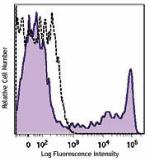
Human peripheral blood lymphocytes were stained with CD8 (cl... -
Brilliant Violet 650™ anti-human CD8
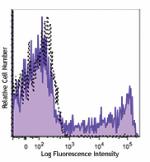
Human peripheral blood lymphocytes were stained with CD8 (cl... -
Purified anti-human CD8
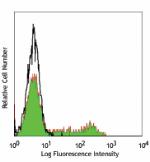
Human peripheral blood lymphocytes stained with SK1, followe... -
FITC anti-human CD8

Human peripheral blood lymphocytes stained with SK1 FITC -
PE anti-human CD8
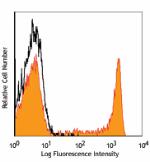
Human peripheral blood lymphocytes stained with SK1 PE. -
PerCP anti-human CD8
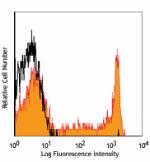
Human peripheral blood lymphocytes stained with SK1 PerCP -
PerCP/Cyanine5.5 anti-human CD8
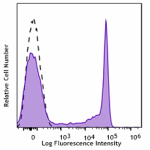
Human peripheral blood lymphocytes stained with CD8 (clone S... -
PE/Cyanine7 anti-human CD8

Human peripheral blood lymphocytes stained with SK1 PE/Cyani... -
APC/Cyanine7 anti-human CD8
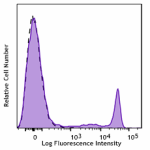
Human peripheral blood lymphocytes were stained with CD8 (cl... -
Alexa Fluor® 488 anti-human CD8

Human peripheral blood lymphocytes stained with SK1 Alexa Fl... 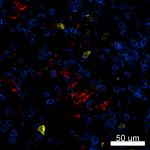
Confocal image of human lymph node sample acquired using the... 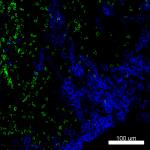
Confocal image of human metastatic lymph node sample acquire... -
Pacific Blue™ anti-human CD8
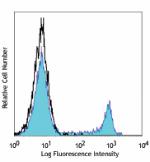
Human peripheral blood lymphocytes stained with SK1 Pacific ... -
Biotin anti-human CD8
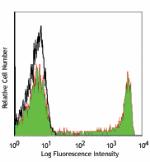
Human peripheral blood lymphocytes stained with SK1 biotin, ... -
APC anti-human CD8
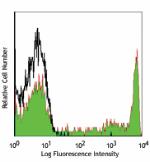
Human peripheral blood lymphocytes stained with SK1 APC -
Alexa Fluor® 700 anti-human CD8
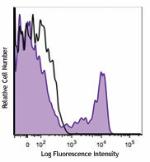
Human peripheral blood lymphocytes were stained with CD8 (cl... -
Purified anti-human CD8 (Maxpar® Ready)
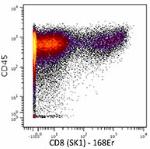
Human PBMCs stained with 154Sm-anti-CD45 (HI30) and 151Eu-an... -
Brilliant Violet 510™ anti-human CD8
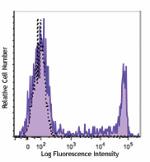
Human peripheral blood lymphocytes were stained with CD8 (cl... -
Brilliant Violet 711™ anti-human CD8
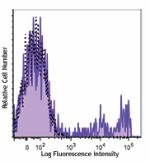
Human peripheral blood lymphocytes were stained with CD8 (cl... -
Brilliant Violet 785™ anti-human CD8
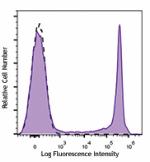
Human peripheral blood lymphocytes were stained with CD8 (cl... -
Brilliant Violet 605™ anti-human CD8
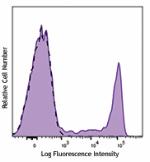
Human peripheral blood lymphocytes were stained with CD8 (cl... -
PE/Dazzle™ 594 anti-human CD8

Human peripheral blood lymphocytes were stained with CD8 (cl... -
PE anti-human CD8

Typical results from human peripheral blood lymphocytes stai... -
APC/Fire™ 750 anti-human CD8

Human peripheral blood lymphocytes were stained with CD3 PE ... 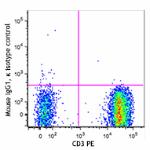
-
APC anti-human CD8

Typical results from human peripheral blood lymphocytes stai... -
Brilliant Violet 421™ anti-human CD8
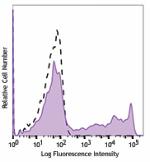
Human peripheral blood lymphocytes were stained with CD8 (cl... -
Pacific Blue™ anti-human CD8
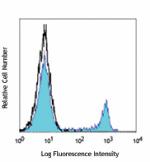
Typical results from human peripheral blood lymphocytes stai... -
TotalSeq™-A0046 anti-human CD8
-
TotalSeq™-C0046 anti-human CD8
-
Brilliant Violet 750™ anti-human CD8

Human peripheral blood lymphocytes were stained with CD8 (cl... -
TotalSeq™-B0046 anti-human CD8
-
Spark Blue™ 550 anti-human CD8
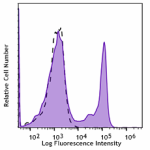
Human peripheral blood lymphocytes were stained with CD8 (cl... -
PE/Cyanine7 anti-human CD8

Typical results from human peripheral blood lymphocytes stai... -
FITC anti-human CD8

Typical results from human peripheral blood lymphocytes stai... -
APC/Fire™ 810 anti-human CD8
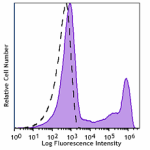
Human peripheral blood lymphocytes were stained with CD8 (cl... -
PE/Fire™ 640 anti-human CD8
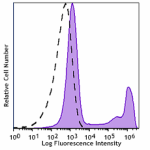
Human peripheral blood lymphocytes were stained with CD8 (cl... -
PE/Fire™ 700 anti-human CD8

Human peripheral blood lymphocytes were stained with anti-hu... -
PerCP anti-human CD8

Typical results from human peripheral blood lymphocytes stai... -
PerCP/Cyanine5.5 anti-human CD8
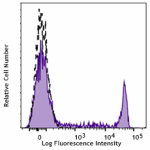
Typical results from human peripheral blood lymphocytes stai... -
TotalSeq™-D0046 anti-human CD8
-
APC/Fire™ 750 anti-human CD8
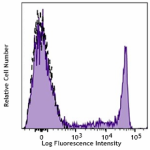
Typical results from human peripheral blood lymphocytes stai... -
GMP APC anti-human CD8
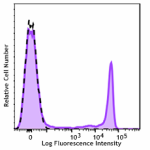
Typical results from human peripheral blood lymphocytes stai... -
PE/Cyanine5 anti-human CD8 Antibody
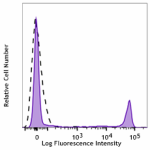
Human peripheral blood lymphocytes were stained with anti-hu... -
Spark UV™ 387 anti-human CD8

Human peripheral blood lymphocytes were stained with anti-hu... -
GMP PE anti-human CD8
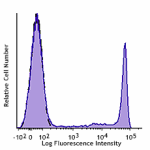
Typical results from human peripheral blood lymphocytes stai... -
GMP PE/Cyanine7 anti-human CD8
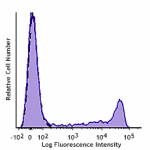
Typical results from human peripheral blood lymphocytes stai... -
Spark NIR™ 685 anti-human CD8

Human peripheral blood lymphocytes were stained with anti-hu... -
KIRAVIA Blue 520™ anti-human CD8
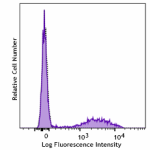
Human peripheral blood lymphocytes stained with anti-human C... -
GMP FITC anti-human CD8
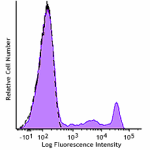
Typical results from human peripheral blood lymphocytes stai... -
GMP Pacific Blue™ anti-human CD8
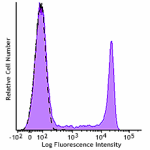
Typical results from human peripheral blood lymphocytes stai... -
GMP PerCP anti-human CD8

Typical results from human peripheral blood lymphocytes stai... -
Spark Violet™ 500 anti-human CD8

Human peripheral blood lymphocytes were stained with anti-hu... -
GMP APC/Fire™ 750 anti-human CD8

Typical results from human peripheral blood lymphocytes stai... -
GMP PerCP/Cyanine 5.5 anti-human CD8
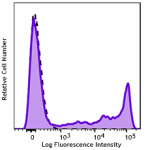
Typical results from human peripheral blood lymphocytes stai... -
Alexa Fluor® 660 anti-human CD8a

Human peripheral blood lymphocytes were stained with anti-hu... -
Spark Blue™ 515 anti-human CD8

Human peripheral blood lymphocytes were stained with anti-hu... -
Spark Blue™ 574 anti-human CD8

Human peripheral blood lymphocytes were stained with anti-hu... -
Spark Violet™ 538 anti-human CD8

Human peripheral blood lymphocytes were stained with anti-hu... -
PE/Fire™ 810 anti-human CD8

Human peripheral blood lymphocytes were stained with anti-hu... -
Spark YG™ 593 anti-human CD8

Human peripheral blood lymphocytes were stained with anti-hu... -
Brilliant Violet 570™ anti-human CD8

Human peripheral blood lymphocytes were stained with anti-hu... -
PerCP/Fire™ 806 anti-human CD8

Human peripheral blood lymphocytes were stained with anti-hu... -
PerCP/Fire™ 780 anti-human CD8

Human peripheral blood lymphocytes were stained with anti-hu... -
Spark Violet™ 423 anti-human CD8 Antibody

Human peripheral blood lymphocytes were stained with anti-hu... -
StarBright UltraViolet 795 anti-human CD8

Human peripheral blood lymphocytes were stained with anti-hu... -
StarBright UltraViolet 575 anti-human CD8

Human peripheral blood lymphocytes were stained with anti-hu...
 Login / Register
Login / Register 













Follow Us